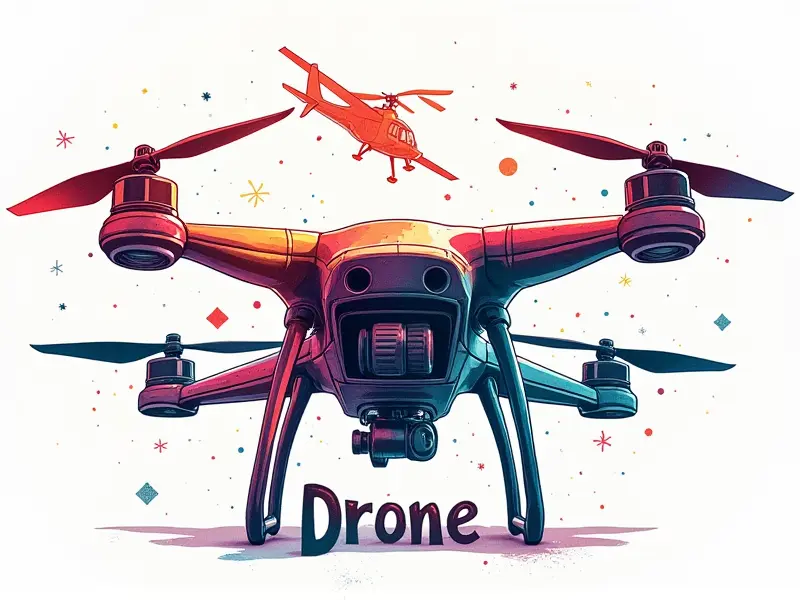Quadcopter battery types

Quadcopter Battery Types: A Comprehensive Guide
When it comes to flying your quadcopter, the battery you choose can significantly impact performance and flight duration. Understanding different types of quadcopter batteries is crucial for maximizing efficiency and ensuring safety.
Understanding C-Rating in Quadcopter Batteries
The C-rate or discharge rate of a battery determines how quickly it can deliver power to your drone's motors. A higher C-rating means the battery can provide more current, which is essential for high-performance applications like FPV racing and aerobatics.
- Low C-Rating: Ideal for beginners or those flying in a relaxed manner with minimal throttle demands.
- Moderate C-Rating: Suitable for general use, offering a balance between performance and cost.
- High C-Rating: Essential for competitive FPV racing and high-throttle applications where quick bursts of power are necessary.
Top 5 Quadcopter Battery Options
Selecting the right quadcopter battery can be overwhelming with so many options available. Here’s a list of top choices based on performance, durability, and user reviews:
- Lithium-Polymer (LiPo): Known for their high energy density and lightweight construction.
- LiFePO4 Batteries: More durable and safer than LiPo batteries with a longer lifespan.
- NiMH Batteries: Less common but offer good performance in specific applications.
- Lithium-Ion (Li-ion): Provides reliable power for various drone models.
- Silicon-based Batteries: Emerging technology promising higher energy density and faster charging times.
Lithium-Polymer vs LiFePO4 Batteries
Both LiPo and LiFePO4 batteries are popular among quadcopter enthusiasts, but they have distinct advantages:
Lithium-Polymer (LiPo) Batteries
- High Energy Density: Offers more power in a smaller package.
- Lightweight: Ideal for drones where weight is crucial.
- Cost-Effective: Generally less expensive than LiFePO4 batteries.
Lithium-Iron Phosphate (LiFePO4) Batteries
- Safety: Less prone to overheating and fire hazards compared to LiPo.
- Durability: Longer lifespan due to better resistance against deep discharges.
- Environmental Impact: Greener option with fewer toxic materials.
Choosing the Right Capacity for Your Quadcopter
The capacity of a battery is measured in milliampere-hours (mAh) and directly affects flight time. Higher mAh ratings mean longer flights but may also increase weight, impacting performance:
- Low Capacity Batteries: Suitable for short-duration flights or small drones.
- Moderate Capacity Batteries: Provide a good balance between flight time and drone efficiency.
- High Capacity Batteries: Ideal for long-range missions, photography, and videography.
Maximize Flight Time with These Batteries
To extend your quadcopter's operational duration, consider the following tips:
- Select High Capacity Batteries: Opt for batteries with higher mAh ratings to increase flight time.
- Battery Management Systems (BMS): Use BMS to monitor and regulate battery health, ensuring optimal performance.
- Eco-Driving Techniques: Adjust your flying style to conserve power, such as reducing throttle during non-critical maneuvers.
High-Performance Quadcopter Battery Picks
If you're looking for batteries that deliver peak performance and reliability, here are some top picks:
- Hobbywing 1300mAh 4S LiPo Battery: High C-rating ideal for FPV racing.
- Gens Ace 5000mAh 6S LiFePO4 Battery: Durable and long-lasting, suitable for high-capacity needs.
Budget-Friendly Quadcopter Batteries
For those on a tight budget but still seeking quality performance, these affordable options are worth considering:
- Hobbywing 1000mAh 3S LiPo Battery: Cost-effective with decent C-rating.
- Gens Ace 2600mAh 4S LiFePO4 Battery: Offers a good balance between price and performance.
Fast Charging Solutions for Quadcopters
Faster charging times mean more flying time. Here are some fast-charging solutions:
- Battery Chargers with High Wattage: Invest in a charger that can deliver high power output.
- Parallel Charging Boards: Allows you to charge multiple batteries simultaneously.
Safe Handling of LiPo Batteries
Lithium-Polymer (LiPo) batteries require careful handling due to their potential for thermal runaway. Follow these safety guidelines:
- Avoid Overcharging and Deep Discharge: Use a BMS system to prevent over-discharging.
- Store Batteries in Fireproof Containers: Keep batteries away from flammable materials.
Eco-Friendly Quadcopter Battery Options
For environmentally conscious pilots, LiFePO4 and other eco-friendly battery types are a great choice. These options reduce the environmental impact of your hobby:
- Lithium-Iron Phosphate (LiFePO4): Safer and more sustainable than traditional LiPo batteries.
- Silicon-based Batteries: Emerging technology promising higher energy density with fewer environmental drawbacks.
High-Capacity Batteries for FPV Racing
FPV racing requires high-performance batteries that can handle intense, continuous use. Here are some top picks:
- Hobbywing 1300mAh 4S LiPo Battery: High C-rating ideal for sustained high-speed performance.
- Gens Ace 5000mAh 6S LiFePO4 Battery: Durable and long-lasting, suitable for extended racing sessions.
Conclusion
Selecting the right battery for your quadcopter is crucial to achieving optimal performance and safety. Whether you're prioritizing high capacity, fast charging, or eco-friendliness, there are numerous options available to suit every need. Always follow best practices for handling LiPo batteries to ensure a safe flying experience.

